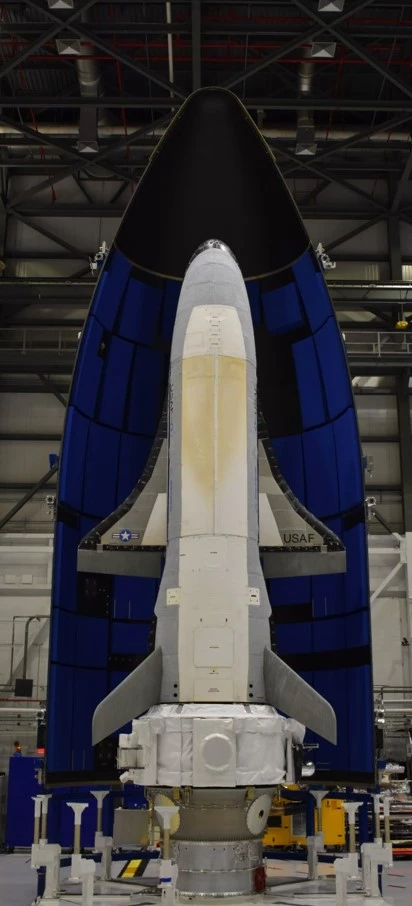With a reported sonic boom, the US Space Force's open-secret X-37B spaceplane returned to terra firma on Saturday, November 12. The robotic craft touched down at NASA’s Kennedy Space Center Shuttle Landing Facility in Florida at 5:22 am EST after a record-breaking 908 days in orbit.
The Orbital Test Vehicle-6 (OTV-6) mission launched on May 17, 2020 from Space Launch Complex 41 at Cape Canaveral Air Force Station in Florida atop a specially modified Atlas V 501 rocket. As with the previous five OTV missions, the exact objectives of the Boeing-built, unmanned, reusable, autonomous spacecraft and the length of the mission were classified, though it also carried a number of open experiments for customers like NASA and the Naval Research Laboratory.
Surpassing the previous record of 780 days in orbit held by OTV-5, OTV-6 introduced a new service module. This ring-shaped module, which was attached to the stern of the spacecraft, provided more payload space for more experiments. Before OTV-6 reentered the atmosphere, the service module was jettisoned and will continue to orbit the Earth before making a controlled reentry to burn up somewhere over the South Pacific.

Among the experiments the spacecraft carried were the Naval Research Laboratory's Photovoltaic Radiofrequency Antenna Module to test the concept of harnessing solar rays and then transmitting power to the Earth using microwaves, and the US Air Force Academy's FalconSat-8 that was released and remains in orbit as a "hands-on" laboratory for Academy cadets.
In addition, NASA's Materials Exposure and Technology Innovation in Space (METIS-2) experiment exposed thermal control coatings, printed electronic materials, and candidate radiation shielding materials to the harsh conditions of space before returning them to Earth for analysis and comparison with computer models. On the biological side, another NASA payload exposed seeds to space to study the effects of cosmic radiation and other factors on potential crops grown on future space bases.
"The X-37B continues to push the boundaries of experimentation, enabled by an elite government and industry team behind the scenes," said Lieutenant Colonel Joseph Fritschen, Department of the Air Force Rapid Capabilities Office’s X-37B Program Director. "The ability to conduct on-orbit experiments and bring them home safely for in-depth analysis on the ground has proven valuable for the Department of the Air Force and scientific community. The addition of the service module on OTV-6 allowed us to host more experiments than ever before."
Source: US Space Force







